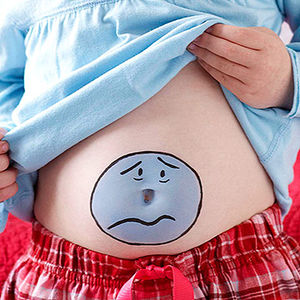Memorial Day has come and gone, the kids are out of school for the summer, and July 4th is quickly approaching. That means summer is officially underway! It also means it’s time to think about the best ways to protect yourself and your family from the dangerous effects of sun exposure as you plan your summer activities.
Melanoma accounts for more than 75% of all skin cancer deaths–making it the most dangerous skin cancers. Yet more incidences of melanoma occur in indoor workers than outdoor workers. A study published in the European Journal of Cancer reports that there is a higher survival rate in skin cancer patients who previously received more sunlight. Researchers at the M.D. Anderson Cancer Center in Houston have said that “there is no substantial evidence that sunscreen protects against any of the three forms of skin cancer.”
So what is the scoop? Why will sunscreens not help you to prevent skin cancer?
Your skin is an absorbent organ. Anything we apply to our skin skips the digestive tract filter and enters the cells and bloodstream directly. Eventually, it will make its way to the liver to be broken down, but not until it’s had negative effects on living tissue in your body.
The Environmental Working Group compiled a review of over 1,700 market brands of sunscreen products and found that 3 out of 5 are only minimally protective or contain potentially harmful ingredients. The leading brands are the worst offenders, according to the EWG. The compounds that the EWG gave the highest health hazard ratings for can be found on their web site in the sunscreen hall of shame. Oxtinoxate is the most widely used ingredient in sunscreens. It sensitizes skin to the sun and disrupts hormonal balances and brain signaling. Dermatologist and professor at the University of Melbourne Robin Marks, M.B., M.P.H., reminds us that “relying on synthetic chemicals to prevent cancer is laughable.” Yet these dangerous chemicals are not the only reason to discontinue using these sunblock’s.
Sunlight is made of 3 different wavelengths:
- Ultraviolet A (UVA) are more prevalent in early morning and late afternoon
- Ultraviolet B (UVB) is stronger during the middle of the day
- Ultraviolet C (UVC) does not reach the earth
In years past, the majority of sunscreens only offered protection from UVB rays. The FDA doesn’t require that sunscreen formulas contain UVA filters, so historically most of them haven’t done so. A sunscreen’s sun protection factor (SPF) only takes into account the measure of UVB rays blocked.
The problem is now that melanoma rates are rising as our exposure to sunlight and vitamin D levels are decreasing.
We get the most Vitamin D from the sun. This is our biggest defense against many diseases, including skin cancer. It is the UVB rays that actually give you the best source of Vitamin D. So the vitamin D-producing UVB rays can be considered the “good guys,” and the skin-damaging UVA rays that penetrate glass can be considered the “bad guys.” This is one theory as to why melanoma rates are higher among indoor workers.
With sunscreens blocking out UVB rays we are left with major Vitamin D deficiency.
Lack of Vitamin D is why sunscreen can actually contribute to cancer. Aside from the high amounts of toxicity, sunscreen blocks Vitamin D production in your body and you are left without natures built in cancer-fighting protection.
Forum Health Clarkston
7300 Dixie Hwy, Suite 500, Clarkston, MI 48346
248-625-5143
Sources
Dr Josh Axe, ,Mayo Clinic Staff (2009)
Environmental Working Group (2009)
Dr. Joseph Mercola (2009), National Center for Biotechnology Information (2008)







